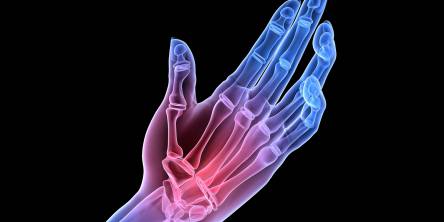When Should You See a Podiatrist?

A podiatrist is a doctor who focuses on treating foot and ankle ailments. If you have specific medical issues, you may need to see a podiatrist for therapy that your primary doctor cannot offer. Don't overlook pain in your lower leg, foot, ankle, or toes.
Consider the following before deciding to consult a foot doctor near me.
Diabetics Need to See a Podiatrist Regularly
Detic foot issues are widespread as a result of poor circulation and numbness caused by diabetes's nerve damage. A diabetic may be less aware of foot problems due to diminished pain sensitivity. If you have diabetes, you should see a podiatrist once a year to examine your medical issues and assess how they are impacting your foot health.
Diabetics commonly endure edema or numbness in their feet, diabetic foot discomfort, athlete's foot, and infections. Diabetes makes patients more likely to have fluid accumulation in their ankles or lower legs. A sore can occasionally progress to an ulcer, which can get infected with germs. When you have diabetes, there are several reasons to consult a podiatrist in addition to your primary care physician.
Do Not Ignore Joint Pain and Arthritis in Your Feet
Arthritis is the swelling of your body's joints and is one of the most frequent foot problems. You should contact a podiatrist if you experience redness and swelling in your ankle or toe joints. This might be the result of a joint injury or arthritis. A podiatrist can cure joint discomfort and get you back on your feet, allowing you to live the active life you want.
An Infection Might Cause Chronic Athlete's Foot
If your athlete's foot has not improved after obtaining therapy from your regular doctor, you may need to see a podiatrist for medical guidance and a second opinion. A fungus usually causes athletes' foot, however, bacterial infections can resemble fungal symptoms. You may have a skin infection in your foot or toe that is causing irritation and pain.
Ingrown Toenails Require Podiatric Care
An ingrown toenail can cause persistent discomfort and swelling that requires treatment. Ignoring a nail condition might potentially cause an infection. A podiatrist can prescribe drugs to aid with pain and inflammation in the toe and joint, and you may need to have a part of the nail removed to allow it to heal.
There May Be a Way to Treat Your Heel Pain
If you're having severe pain in your heel, it might be due to a tendon injury, a bone spur, or arthritis. The first step is to visit a podiatrist for an exam and X-ray. Your podiatrist can advise you on how to treat the heel spur and whether special custom inserts, shockwave, or laser treatment may assist with the discomfort throughout your rehabilitation.
Corns and Calluses Require Special Care
Calluses and corns are mostly caused by tough skin in a specific place. You will feel pain and discomfort when the corn or callus develops too thick. Some topical treatments may help, but if the problem persists despite your doctor's recommended medication, you may need minor surgery or local debridement.
Bunions Will Not Go Away on Their Own
A bunion is a lumpy, hard protrusion that grows on the exterior of the big toe joint. As it grows, it becomes irritated and uncomfortable. Over time, this might impair your ability to engage in physical activities you like. A podiatrist can do a foot exam and other tests to evaluate the severity of the bunion and the best way to treat it.
The bottom line
Many individuals put off foot care until it is too late, which is why you should consult a podiatrist about your foot problems. A board-certified podiatrist can help you feel better, whether you've experienced a sports injury, have an ingrown toenail, or need preventative treatment due to a health condition that makes you more susceptible to foot problems.
Similar Articles
A healthy spine is the foundation of a functioning body. It supports your frame while allowing you to bend, flex, and move more freely. However, most people neglect the importance of spine health until they have a back condition.
Whether you're having trouble moving body parts or experiencing worsening joint discomfort, an orthopedic doctor can help. They can treat anything from a minor strain to complex treatments such as shoulder replacement. The appropriate treatment from an orthopedic expert at the right time might relieve your pain and improve your symptoms in less time.
When it comes to trauma, professionals in the mental health sector readily admit that no single style of therapy or intervention is appropriate for every case or individual.
Rheumatoid arthritis (RA) is a type of autoimmune disease that occurs when the body's immune system attacks the lining of joints, causing inflammation and causing symptoms like pain and stiffness. RA usually affects both sides of the body in a similar way, but small joints of the hands and feet are often affected first, often knuckle joints of the fingers.
An electroencephalogram (EEG) is a test that measures the electrical activity in the brain. Healthcare experts utilize it to evaluate and comprehend neurological illnesses, sleep disorders, and brain damage.
So, your back decided to stage a mutiny and gift you with a herniated disc. Lovely. Now what? If you’re imagining a future filled with endless discomfort and groaning every time you get out of bed, don’t fret. There are plenty of ways to tackle a herniated disc and get back to living your best, pain-free life.
Back pain – it’s not just a matter of “I lifted a heavy box, and now my back hurts.” It’s often the result of a complex dance between our minds and bodies, with stress, anxiety, and emotions playing lead roles. If you’ve ever woken up with a stiff back after a tough week or felt your spine twinge just from reading a long email chain, you’re not alone.
Chronic pain is a medical problem that affects many people around the world. Unlike acute pain, which is a short-term response of the body to tissue damage, chronic pain lasts longer, often without obvious physical damage. It can last from several months to several years, and its consequences can affect all aspects of a person's life
When was the last time you gave your veins some love? These hardworking highways of blood don’t ask for much—just a little support and, occasionally, professional attention when they’re not performing at their peak.









